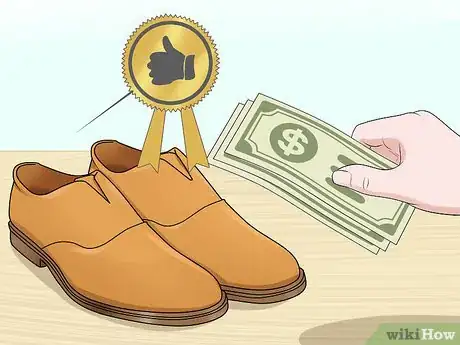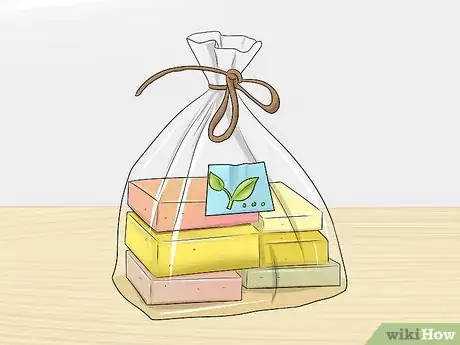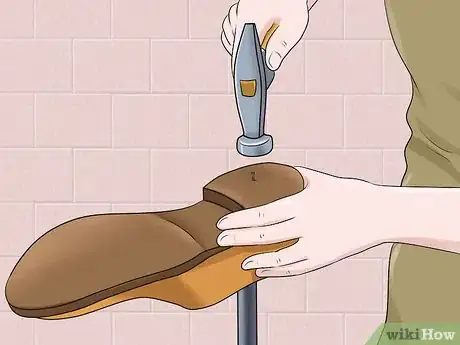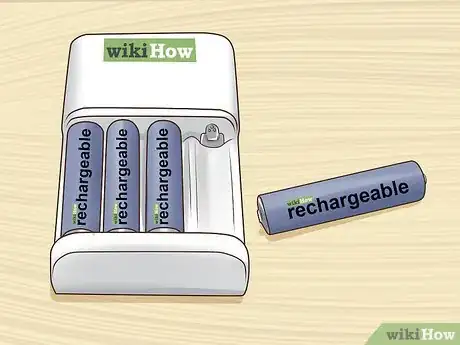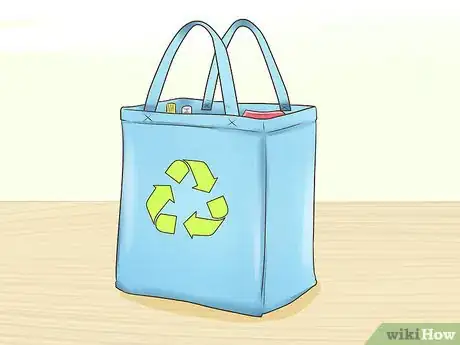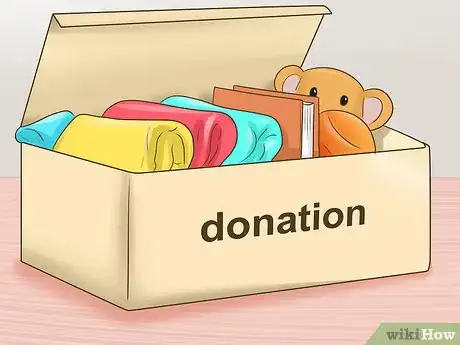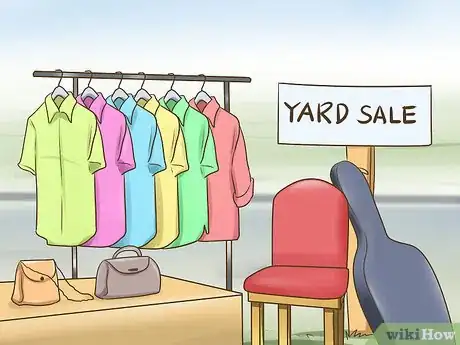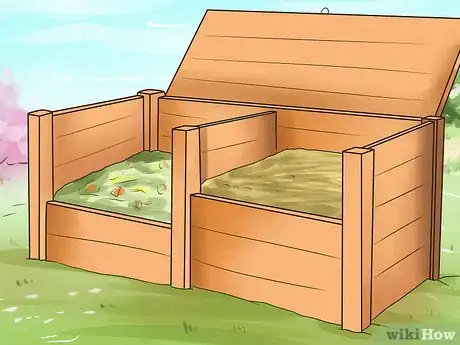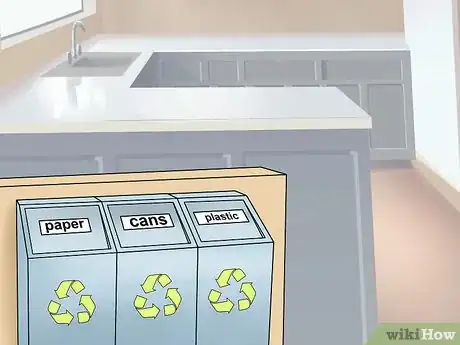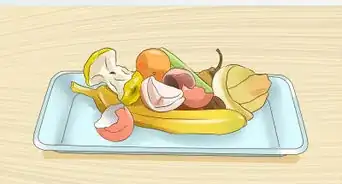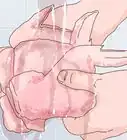This article was co-authored by Kathryn Kellogg. Kathryn Kellogg is the founder of goingzerowaste.com, a lifestyle website dedicated to breaking eco-friendly living down into a simple step-by-step process with lots of positivity and love. She's the author of 101 Ways to Go Zero Waste and spokesperson for plastic-free living for National Geographic.
There are 12 references cited in this article, which can be found at the bottom of the page.
wikiHow marks an article as reader-approved once it receives enough positive feedback. In this case, 89% of readers who voted found the article helpful, earning it our reader-approved status.
This article has been viewed 91,347 times.
If you’re looking to make a positive change for the environment, reducing your household waste is a great place to start. Start by buying smart to reduce how much waste you bring in the house when you purchase items. In addition, you can decrease how much waste you create by finding ways to reuse and donate old items. Living green, by recycling and composting, will lower how much waste you contribute to the environment.
Steps
Buying Smart
-
1Buy quality items that last. You've probably heard the saying, "quality not quantity." That adage applies when you're trying to reduce household waste. Buying higher quality items, including dishes, pans, clothing, toys, and most everything else, will reduce your waste overall because the items will last longer. You won't need to replace them as often.[1]
- For instance, when you can, spring for the higher quality pot. It's more expensive, but it will last many more years.
-
2Buy bigger packages of food. When purchasing items like food, choose bigger packages over smaller to help reduce trash from packaging. For instance, a large box of cereal creates less waste than several smaller boxes of cereal that add up to the same amount.[2]
- If you prefer individual servings, portion the food out into reusable containers when you get home. For instance, if you like small portions of pretzels, buy a big bag and then use small sealed containers to create individual portions.
- Also, be sure to look for packaging that can be recycled, so you aren't contributing to the landfill.
Advertisement -
3Look for products with less packaging. Today's society has bought into excessive packaging. Some items have two or three layers of packaging. If you see an item that seems to have an excessive amount of packaging, try looking for a different brand to see if it uses less.[3]
-
4Buy from the bulk bins. Bulk bins are becoming more popular, particularly in health food stores. With these bins, you simply scoop out the food (such as rice, flour, sugar, etc.) into a bag, which usually produces less waste than standard packaging.
- You can also bring reusable containers from home to make the purchase even greener. Make sure to get a cashier to write the weight of the container on it so that you don't pay for the container.
Lowering Your Waste Production
-
1Repair broken items. In our society, it's tempting to just throw out items when they break. However, if you're trying to reduce waste, try to repair the items instead. That way, you aren't just throwing it in the landfill. For instance, if the sole comes off your boot, take it to a cobbler instead of just throwing it out. If your television has a problem, get it repaired instead of going out to buy a new one. As an added bonus, repairs are usually cheaper than buying a new item.[4]
-
2Buy reusable items. Instead of purchasing throwaway items like paper plates, plastic zip top bags, and one-time use batteries, opt for reusable items. Depend on washable plates and reusable containers and bags. Invest in rechargeable batteries so you're not always throwing them away. As an added bonus, this tip will save you money in the long term.[5]
-
3Use a reusable grocery bag. Plastic grocery bags seem to multiply, particularly if you go shopping often. Of course, you may reuse some of them in your house, but you likely throw away a good number, too. The best solution is to bring reusable cloth grocery bags with you to the store. In addition to being reusable, they hold more than plastic bags, and they are less likely to bust on you.
- Store your canvas bags in your car or leave them hanging right beside your door as a reminder to use them.
-
4Unsubscribe from junk mail. If you're like most people, you receive a large amount of mail that goes directly into the trash. Take steps to reduce that mail. You can call catalog companies and ask to be taken off the list, for instance, if you're not interested in seeing the catalog.
- You can also use websites like https://www.catalogchoice.org/ and https://dmachoice.thedma.org/ to cancel junk mail. The site https://www.optoutprescreen.com/?rf=t will let you opt out of credit card offers.
-
5Buy less overall. In a consumerist society, you may feel the need to buy, buy, buy. However, the next time you're eyeing that new thing you want to buy, step back and ask yourself, "Do I really need this?" More often than not, the answer will be, "No."
- Before you buy, think about if you own something that could serve the same purpose. You may be able to repurpose something you already have to fill a need.
- It also helps to avoid temptation by taking fewer trips to the store.
-
6Donate old items. When you're not using something anymore, try to find a place to donate it. Furniture, clothes, and other household items can be donated to thrift stores. Old books and magazines can be donated to libraries or schools. Donating items will help you reduce the trash you produce.[6]
-
7Have a yard sale. If you hate to just give something away (after all, you paid good money for it), consider holding a yard sale instead. You likely won't pull in the big bucks, but you can make a little cash and clean out items from your house at the same time. Plus, you can donate anything you have leftover.[7]
- Advertise your yard sale online or in the newspaper to increase attendance.
- Spring and early summer, when it’s warm but not too hot, are excellent seasons for yard sales.[8]
Living Green
-
1Repurpose old items. When you're about to throw something out, think about if it could serve another purpose in your household. Often, even if it can't continue to serve its original purpose, it can be put to use doing something else.[9]
- Use old t-shirts and towels as rags for household cleaning.
- Clean grout and other small spaces with old toothbrushes.
- Reuse containers you are going to throw out. For instance, fill paper egg cartons or the bottom of plastic beverage containers with potting soil and use them to plant seedlings. Alternatively, store food, office or craft supplies, or other small items in leftover glass jars.
-
2Compost what you can. Composting is a great way to keep extra trash out of the landfill. In addition, you can use what you make to provide nutrients to your yard and garden. Basically, composting is where you take organic materials and let them decompose to create a fertilizer. You can compost everything from food scraps, coffee grounds, and eggshells to other household waste like clean, shredded paper, grass clippings, and ashes from the fireplace. Collect the items in a small, lidded container in your home.[10]
-
3Make a compost pile or bin. Most compost piles are outside. You can just have a pile that you turn periodically, but you can also use a wooden, open-sided bin or a wire mesh bin.[11] If you don't have much outdoor space, you can also compost inside. You can purchase ready-made indoor compost pails, or create your own using two garbage cans of different sizes. Place a brick at the bottom of the larger can and add dead branches and/or leaves. Drill holes in the bottom and sides of the smaller can, and place it within the larger can.[12]
- Your compost will be ready to use when it is dark brown and crumbly, usually after about three or four months. Incorporate it into your garden, or use it as nutrient-rich mulch.
- If you don't have an interest in composting, some cities offer composting and mulching for items like tree branches and grass clippings.
-
4
-
5Designate an area in your kitchen just for recycling. It helps to have a separate trash can specifically for recycling, so you can separate it out as you toss out items. If your community requires it, you may need to separate different types of recycling. In that case, try having a small bin for each type.
- Labeling the bins clearly can help ensure everything is recycled properly.
- Check for the recycling symbol on the package before sticking it in the recycling. Always rinse off items before recycling. Also, you can't recycle items like pizza boxes that are covered in grease.[14] Additionally, you should remove the lids from plastic bottles, which are not recyclable (unless your community advises otherwise).
Expert Q&A
-
QuestionHow can we stop using plastic bottles?
 Kathryn KelloggKathryn Kellogg is the founder of goingzerowaste.com, a lifestyle website dedicated to breaking eco-friendly living down into a simple step-by-step process with lots of positivity and love. She's the author of 101 Ways to Go Zero Waste and spokesperson for plastic-free living for National Geographic.
Kathryn KelloggKathryn Kellogg is the founder of goingzerowaste.com, a lifestyle website dedicated to breaking eco-friendly living down into a simple step-by-step process with lots of positivity and love. She's the author of 101 Ways to Go Zero Waste and spokesperson for plastic-free living for National Geographic.
Sustainability Specialist Buy refillable items like Plaine Products. Plaine Products ship in aluminum bottles. When you receive a new one, send your old, empty bottle back to the company. They wash and sanitize the bottle and reuse it over and over again. You can also purchase products with less plastic, like solid bar shampoo, or laundry detergent in molded cardboard containers.
Buy refillable items like Plaine Products. Plaine Products ship in aluminum bottles. When you receive a new one, send your old, empty bottle back to the company. They wash and sanitize the bottle and reuse it over and over again. You can also purchase products with less plastic, like solid bar shampoo, or laundry detergent in molded cardboard containers. -
QuestionHow can I implement "reduce, reuse, recycle" in my household?
 Community AnswerReduce: Limit items coming in your home, such as junk mail. Reuse: Start a yard sale or donate. Recycle: Recycle paper, cardboard and plastics.
Community AnswerReduce: Limit items coming in your home, such as junk mail. Reuse: Start a yard sale or donate. Recycle: Recycle paper, cardboard and plastics. -
QuestionHow do I assess my household waste and recycling levels?
 Kelsey MenzelCommunity AnswerTake notes! Keep an eye on what you're sending out in the trash vs. how much recycling you put on the curbside each week. You can weigh it, as suggested in the article, or measure by bags. If you are recycling more and more each week, that's a sign of progress.
Kelsey MenzelCommunity AnswerTake notes! Keep an eye on what you're sending out in the trash vs. how much recycling you put on the curbside each week. You can weigh it, as suggested in the article, or measure by bags. If you are recycling more and more each week, that's a sign of progress.
Warnings
- Don't put bones, meat, dairy, fats, invasive weeds, diseased plants, or pet feces in a compost pile. The weeds and plants can damage other plants in your yard or garden, and pet feces can contain pathogens that can cause illness. Bones, meat, dairy, and fats all attract rodents and other pests.⧼thumbs_response⧽
References
- ↑ https://www.waikatoregion.govt.nz/Services/Regional-services/Waste-hazardous-substances-and-contaminated-sites/Solid-waste/Reducing-waste/Reducing-household-waste/
- ↑ https://www.waikatoregion.govt.nz/Services/Regional-services/Waste-hazardous-substances-and-contaminated-sites/Solid-waste/Reducing-waste/Reducing-household-waste/
- ↑ http://www.thisland.illinois.edu/57ways/57ways_27.html
- ↑ https://www.epa.gov/recycle/reducing-and-reusing-basics
- ↑ http://www.thisland.illinois.edu/57ways/57ways_27.html
- ↑ http://www.thisland.illinois.edu/57ways/57ways_29.html
- ↑ http://www.naturalawakeningsmag.com/Green-Living-Archive/Tips-for-the-Best-Yard-Sale-Ever/
- ↑ http://www.sideroad.com/Home_Organizing/how-to-organize-a-yard-sale.html
- ↑ https://www.epa.gov/recycle/reducing-and-reusing-basics
- ↑ https://www.epa.gov/recycle/composting-home
- ↑ https://raleighnc.gov/services/content/SolidWaste/Articles/BackyardComposting.html
- ↑ https://www.apartmenttherapy.com/how-to-make-your-own-indoor-compost-bin-138645
- ↑ http://www.recycling-guide.org.uk/rrr.html
- ↑ https://lbre.stanford.edu/pssistanford-recycling/frequently-asked-questions/frequently-asked-questions-contamination
About This Article
If you want to reduce the amount of waste in your household, buy bigger packages of food, since this will help reduce the amount of trash due to packaging. If you need to, you can repackage the food in smaller, reusable containers. When it comes to goods around your home, try to buy higher-quality items that will last, and repair broken items whenever possible to make them last longer. You can also repurpose items around your home to get a second life out of them, like turning old T-shirts into cleaning rags. For tips on creating your own compost pile with food scraps, keep reading!
